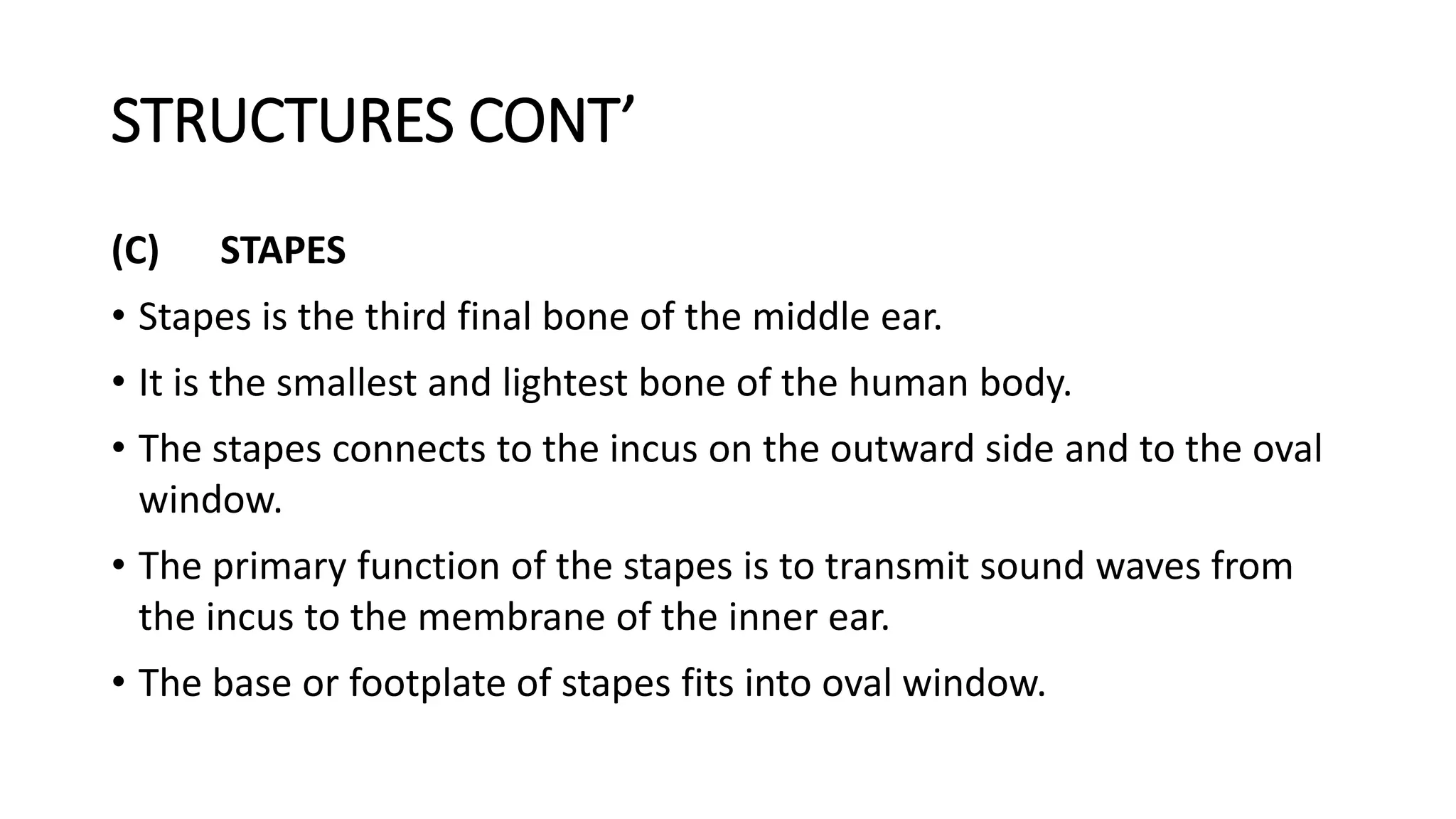The document provides a comprehensive overview of the anatomy and physiology of the ear, detailing its structure divided into the outer ear, middle ear, and inner ear. It explains how sound waves are transduced into electrical signals, highlighting the role of various components such as the tympanic membrane, auditory ossicles, and cochlea. Additionally, it covers the vestibular system's function in maintaining balance and equilibrium.


















































